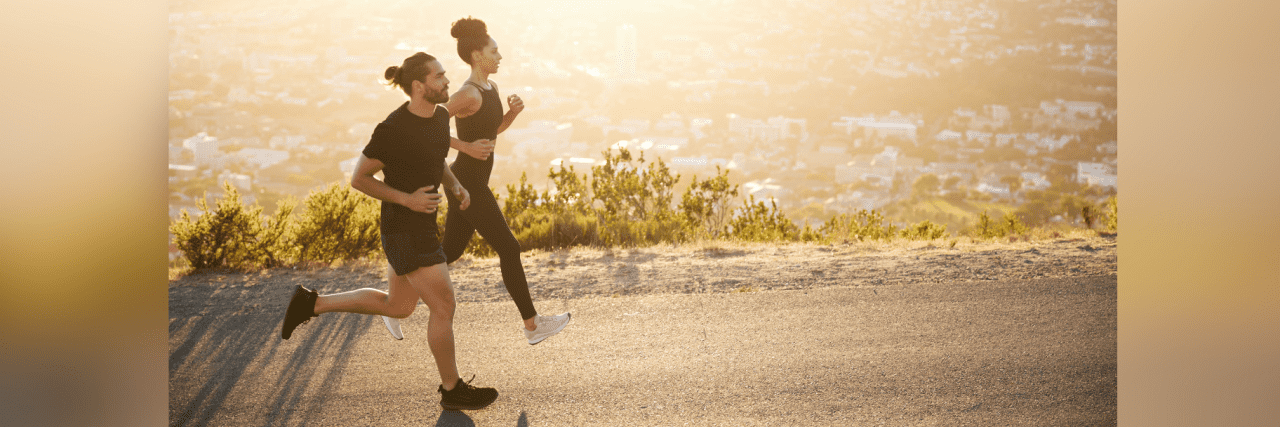For as long as I can remember, exercise has been a part of my life. At a young age, I inherited my dad’s love for running — and also at a young age, I was diagnosed with ulcerative colitis (UC). Both came into my life around age 14, so I’ve watched those two relationships evolve and change right alongside each other.
In those early years of my diagnosis, I was fortunate to find a treatment that worked immediately and afforded me four healthy years of high school. I was able to excel in running with zero inflammatory bowel disease (IBD) complications. After high school, my UC knowledge expanded as I learned about the condition and met other people who lived with IBD. As I became more involved in my treatment plan and advocacy for IBD awareness, my relationship with running was also transforming. I was good at competing, but it had started to become tumultuous when the only focus was winning.
However, after my first — then my second — flareup, running started to become a puzzle piece that fit perfectly into treatment management. I had doctors and medications and other tools at my disposal, but running (and working out in general) rapidly became less about competition and more about self-care. I had been so focused on running being a tool to prove my worth to myself, my coaches, and my family that I wasn’t seeing the opportunity to use this exercise I loved to help manage IBD
As treatments changed and remission came and went, the one thing that remained constant was my dedication to exercise. Even when I wasn’t well enough to step foot outside, I found ways to keep moving inside. Keeping my body in motion, together with care team communication, became as vital as my medication.
As I entered my late 20s and approached the 15-year anniversary of my diagnosis, I began to fully appreciate the fact that medication alone couldn’t keep me healthy the way I wanted to be healthy. Sure, on a strictly clinical level, swallowing my pills did treat the disease. But what about all the mental and emotional side effects? What about the feelings of isolation and stuckness? What about feeling like my body isn’t mine? What about wanting to feel in control of anything when your bowels are definitely out of control?
My goal had shifted away from course records and into a full-body remission instead… in body and mind. That’s where exercise came into the picture.
Movement helped manage the stresses of living with IBD and reminded me of what I’m capable of. So while the doctors and medications took care of that clinical picture, running (and other methods of self-care) helped manage the “behind-the-scenes,” if you will — ensuring my psyche stayed as healthy as my insides. After all, we carry most of our emotions in our gut, right? I believe it.
While there have been numerous studies on exercising with IBD, it can feel intimidating to know where to start, especially with active disease (and I don’t recommend working out if you’re in a severe flare). I’m not a doctor, so always talk to yours before trying anything new, but here are five tips that help me exercise:
- Keep it simple. Working out can be lifting light weights while watching TV, or it can be doing yoga poses during commercials.
- Start really, really small. If you want more than what’s above, still start with what’s above, and slowly add more reps, longer poses, or heavier weights over time.
- Take off days. Don’t do this every single day, but planning days off will allow your body, gut, and mind to recover.
- Educate yourself. Look up easy movements, or talk to another IBD warrior about what they do.
- Consider walking. If you feel comfortable leaving the house, walking is a great low-impact activity that can be easier on the gut than jumping or running.
Regardless of where you’re at with IBD or exercise, it’s never a bad time to give something new a try.

